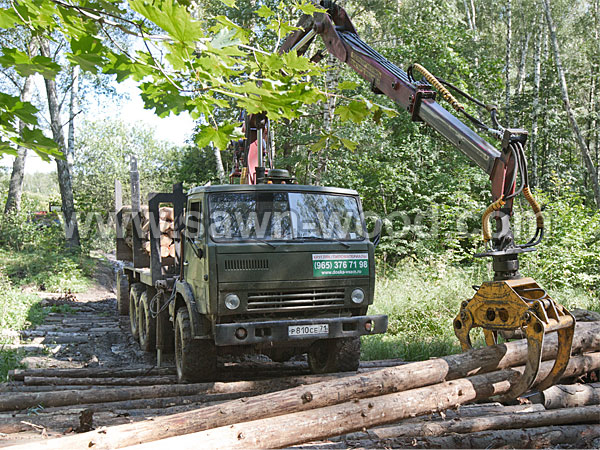Wood is one of the most popular materials used in modern construction and decoration. Depending on the cutting and further processing of logs distinguish many varieties of produced lumber. One of the most popular uses is edged board.
Edged board is sawn wood, having a constant rectangular section along its entire length. Edged board has either not wane (edges left over from round logs), or present in the minimum prescribed standards quantity.
According to the type of cutting towards the longitudinal line logs, we are getting the following types of edged boards:
- Central (central part of the logs without core).
- Medullary (central part of the timber with the core).
- Sides (from the side of the logs and from the center to the flitch).
- Flitch.
At the first stage of production edged boards takes place when starting sawing logs.
The following types of cutting:
Radial sawing (cut extends through the central zone of the barrel, the annual rings are arranged on the board cut obliquely from 60 to 90 degrees to the plane of the board, such a timber is less deformed during the entire drying or moisture absorption, but duringmanufacturing getting a big quantity of wastes).
Semi radial sawing (annual rings are angled 45 degrees to the plane of the board, reduces the amount of waste and the total value of the timber).
Tangential cutting (incision is made at a distance from the center of the log, with the surface of the board has a clear wood structure, but is not designed to resist to the dry and swell; waste with this method of cutting is the minimum).
Sorted edged boards stored in stacks, free flowing air for natural drying of wood. Typically, the board is further treated with antiseptics to prevent decay. The most effective antiseptic boards protective structure under pressure (for deeper penetration into the wood antiseptic). So treated pine boards, for example, are much stronger and more durable.
Usually when you select edged boards pay attention to its characteristics such as the width and thickness of the boards, wood species, and the number of procedures performed on the board (drying, gouging, antiseptics process during the summer period, etc.) and surface quality. Depending on these boards is determined by grade, its final price.
There are common standards for the grade of edged boards, however, in some cases, boards and produce custom-made for individual technical standards.
The standard sizes of edged board are:
- Width: 100, 150 or 200 mm.
- Length: 6 mm.
- Thickness: 25, 40 or 50 mm.
And lumber must keep all the default moisture values.
Application of edged board in the construction unusually wide: from the creation of different designs of buildings to finish exterior or interior walls of buildings. Edged boards used in the manufacture of furniture, ceilings and floors creating residential buildings. Often, from this timber make different economic structures: garages, sheds, bathhouses.
The type of wood usually defined depending on the operating conditions of future constructions. Wood varieties and breeds differ in moisture resistance, strength and other characteristics of the material used. The most durable and expensive types of wood are commonly used for making furniture and interiors.
Species cheaper used for structural purposes. Timber common of hardwood (aspen, birch) is considered cheap: different material hardness, makes it difficult to process and pliability to rot. The most popular in the production of edged board such breeds as spruce and pine.
Structure of pine is denser from spruce, but spruce board is the best thermal insulator.Therefore, spruce goes for furnish and use at construction pine bearing structures.Edged board of larch, for example, is highly resistant to rot, therefore used in the construction of sewerage collectors and septic tanks (such constructions can last more than a hundred years).Highly popular to use at construction of edged board beautiful and environmentally friendly floors (relatively low cost) in residential buildings.
Standard quality requirements of edged board comprehensively specified in the Russian standards GOST 8486-86 «Softwood Lumber» containing all requirements forthe edged and unedged boards, small and big bars made of pine, larch, fir, spruce or cedar.A term used in the production of lumber in Russian standards is GOST 18288-87.

